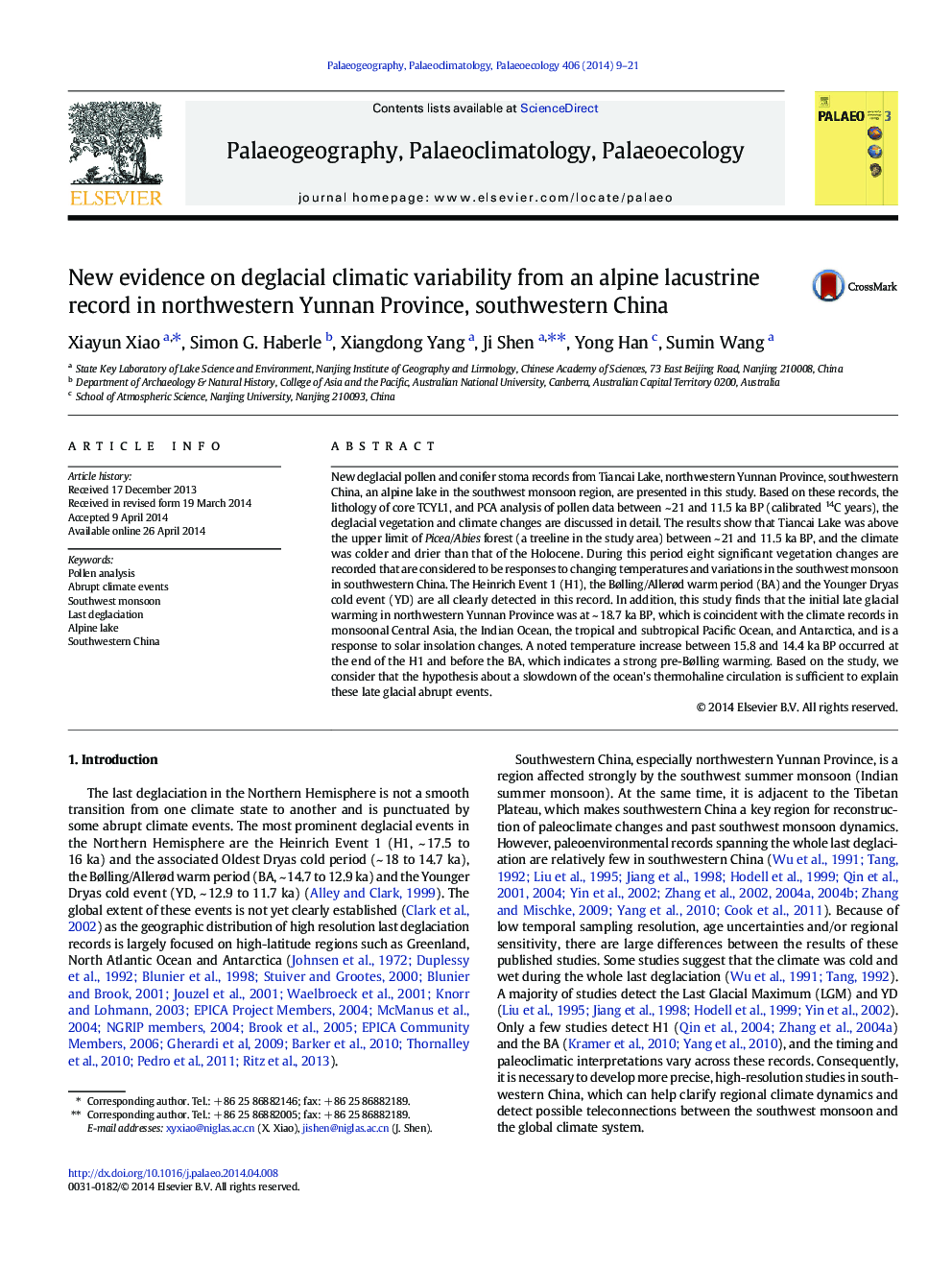| کد مقاله | کد نشریه | سال انتشار | مقاله انگلیسی | نسخه تمام متن |
|---|---|---|---|---|
| 4466210 | 1622184 | 2014 | 13 صفحه PDF | دانلود رایگان |
• A new sensitive deglacial pollen record from southwestern China (SW) is presented.
• The H1, BA and YD are detected in an alpine lake record from SW China.
• Our study found that the initial late glacial warming was at ~ 18.7 ka BP in SW China.
• There is a significant warming at the end of the H1 and before the BA.
• The ocean's thermohaline circulation adequately explains these abrupt events in here.
New deglacial pollen and conifer stoma records from Tiancai Lake, northwestern Yunnan Province, southwestern China, an alpine lake in the southwest monsoon region, are presented in this study. Based on these records, the lithology of core TCYL1, and PCA analysis of pollen data between ~ 21 and 11.5 ka BP (calibrated 14C years), the deglacial vegetation and climate changes are discussed in detail. The results show that Tiancai Lake was above the upper limit of Picea/Abies forest (a treeline in the study area) between ~ 21 and 11.5 ka BP, and the climate was colder and drier than that of the Holocene. During this period eight significant vegetation changes are recorded that are considered to be responses to changing temperatures and variations in the southwest monsoon in southwestern China. The Heinrich Event 1 (H1), the Bølling/Allerød warm period (BA) and the Younger Dryas cold event (YD) are all clearly detected in this record. In addition, this study finds that the initial late glacial warming in northwestern Yunnan Province was at ~ 18.7 ka BP, which is coincident with the climate records in monsoonal Central Asia, the Indian Ocean, the tropical and subtropical Pacific Ocean, and Antarctica, and is a response to solar insolation changes. A noted temperature increase between 15.8 and 14.4 ka BP occurred at the end of the H1 and before the BA, which indicates a strong pre-Bølling warming. Based on the study, we consider that the hypothesis about a slowdown of the ocean's thermohaline circulation is sufficient to explain these late glacial abrupt events.
Journal: Palaeogeography, Palaeoclimatology, Palaeoecology - Volume 406, 15 July 2014, Pages 9–21
